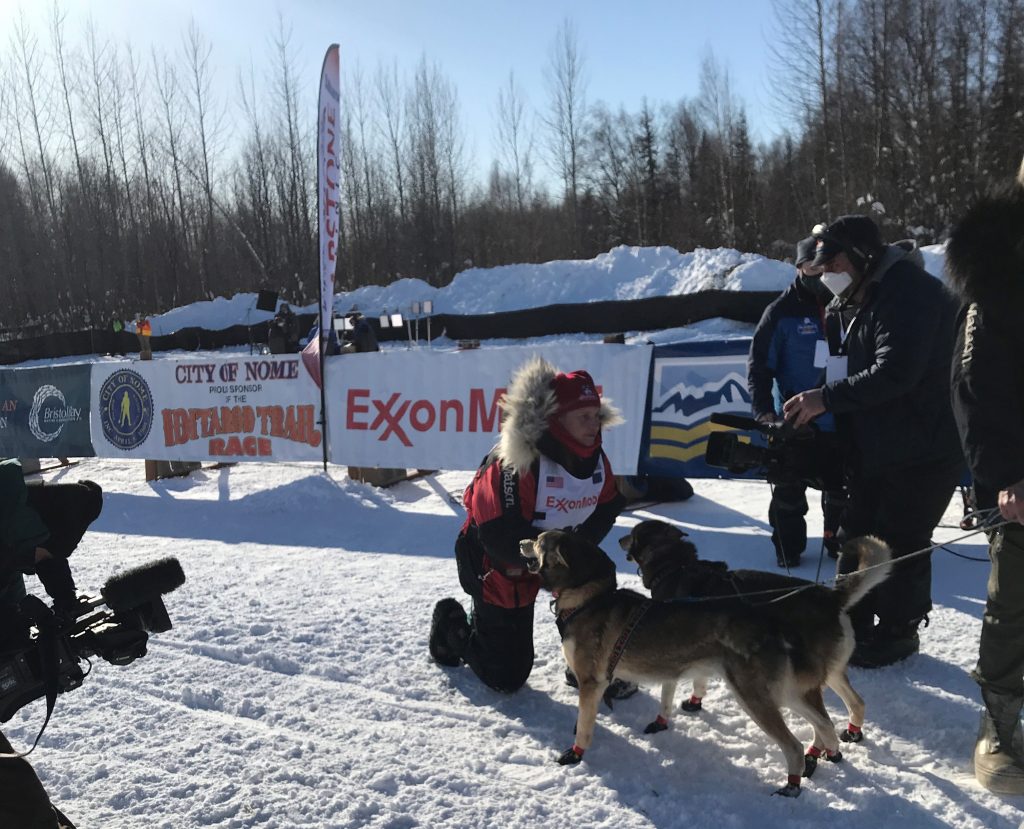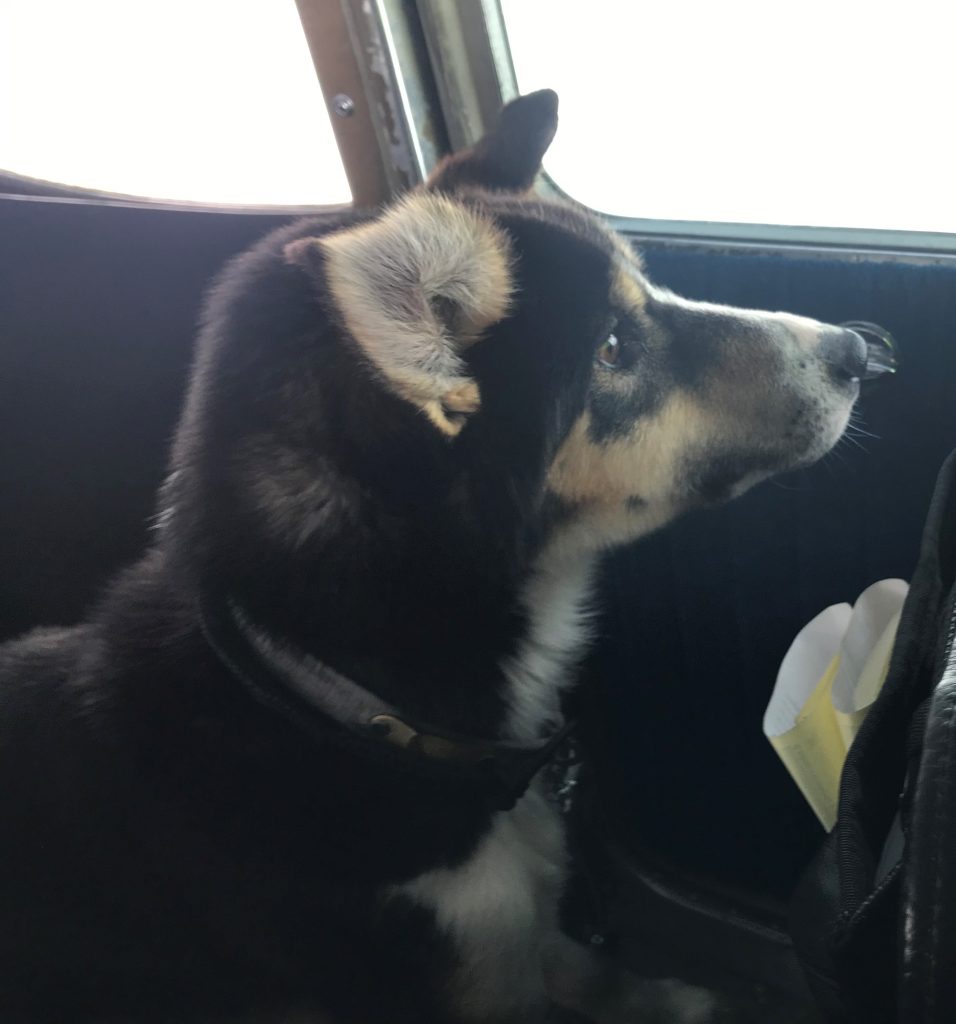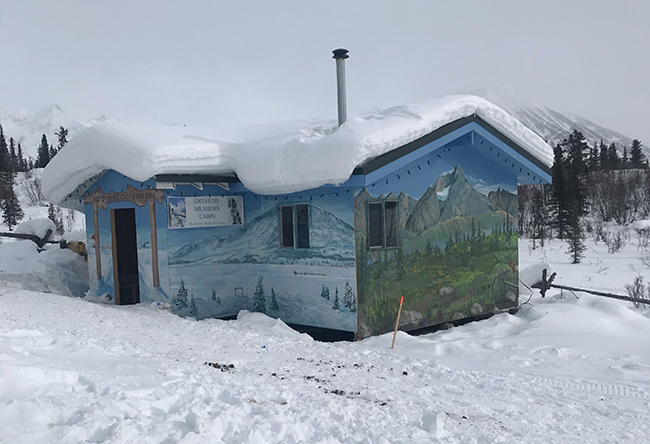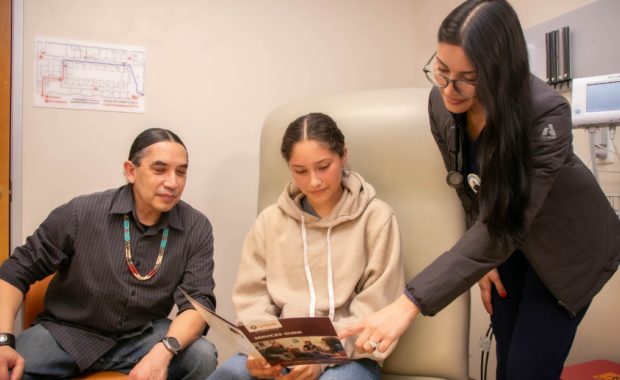Emergency Medicine PA Braves Alaskan Tundra to Lead Iditarod Race Medical Team
‘I would go again in a heartbeat,’ Says Thomas Barale, PA-C
March 9, 2022
By Jenni Roberson

Temperatures as low as 40 degrees below with windchill; check points without running water; nights spent on the trail in a sleeping bag; and daily meals consisting of oatmeal, beans, rice, and a little meat for 10 days in a row may sound like absolute torture for most – but not for Thomas Barale, PA-C, who practices in emergency medicine.
[Wherever you want to go in your career, AAPA can help – join or renew your membership today]
South Pole parka
20 years ago, Barale spent 10 months at the Amundsen-Scott South Pole Station in Antarctica. So, when the opportunity to break out his old “South Pole parka” (as he calls it) and take part in the Iditarod Trail Sled Dog Race popped up unexpectedly, he seized the opportunity without question.
In 2020, Barale was in Atlanta, practicing at the Georgia World Congress Center Alternative Care Facility, when one of his physician colleagues received an email from the director of the International Rescue and Relief program at Union College in Lincoln, Nebraska – a four-year, degreed program that teaches disaster management and wilderness and remote medicine to emergency medical technicians (EMTs).
The director was seeking someone to teach a course on tropical and travel medicine in February 2021 in Palmer, Alaska. The instructor would then oversee the students as they provided COVID-19 testing and medical coverage for the 2021 Iditarod mushers and support staff.
During the annual race from Anchorage to Nome, mushers and a team of 14 dogs have up to 15 days to cover 1,000 miles – often facing extreme weather conditions including blizzards. The physician recommended Barale, a 1989 graduate of the University of Washington School of Medicine’s MEDEX Northwest PA program, who jumped at the chance.
In February 2021, Barale spent three weeks in Palmer, teaching classes about malaria, tuberculosis, tropical dermatology, hepatitis, parasitic infections, travel medicine, cold-weather injuries, diarrhea, and sexually transmitted infections.
As the Union students are EMTs, another part of Barale’s role included monitoring the students’ rotations in Anchorage with AirMed Alaska on flight medivacs and ground ambulances.
[PAs Providing Care at the Bottom of the World]

The Iditarod
After a brief return home, Barale flew back to Anchorage in early March where he reunited with the 13 students who would serve on the medical team. In the days leading up to the start of the race, the team tested staff and mushers for COVID-19 – just one of many changes that Barale says were necessary for the race due to the pandemic.
“COVID drastically changed the operations of the Iditarod,” Barale says. “The ceremonial start in Anchorage was cancelled and because of the fear of introducing COVID to isolated villages the course of the race was changed to a circular course of 785 miles, starting and finishing at the same location and removing Nome as the traditional finish line.”
Barale says the mushers had to be tested again at the start line, but the atmosphere at the start of the race was every bit as thrilling as he expected it to be.
“I’m a dog guy, and there were 650 dogs in the starting area!” Barale says. “Mushers would come to the start line every two minutes. The dogs were pulling on their ropes as hard as they could to start running. They would bark and whine until the musher gave the command to go, and then there was dead silence, and you only heard their footsteps.”
[PA Julie Mueller Thrives in Remote Antarctica]
During the Race
Over the course of the race – which lasted seven days and just over 14 hours for the winner and 10 days and nine hours for the final finisher – Barale says there was one medical emergency.

“Mushers are pretty hardy and other than serious injuries they were not likely to complain of anything so not to delay their race time,” Barale says. “There was one injury to a musher who lost control of the sled on the ice; the sled flipped, and she suffered a relatively serious head injury and dislocated shoulder. She managed to make it to the next check point and was flown to Anchorage the next day by an Alaska National Guard helicopter.”
As for dogs, Barale says 354 dogs finished with 37 mushers this year and that the dogs undergo more medical checks than the mushers.
“All dogs prior to racing have to have EKG’s, blood work, and extensive physicals,” Barale says. “They are urine drug tested on the day of the race. Conversely, the mushers don’t even need a physician clearance to enter the race!”
To adventure-seeking PAs like Barale, his time in Alaska might be considered a once-in-lifetime experience – but he says he hopes it isn’t.
“I have never experienced anything like this before,” Barale says. “I would go again in a heartbeat.”
Jenni Roberson is director of Media Relations at AAPA. Contact her at [email protected].
This article was originally published in July 2021.
You May Also Like
A Week in the Life of a PA in Radiation Oncology
PA Student Combines Passions for Medicine, Entrepreneurship, and Global Health
2021 Preceptor of the Year Always Has a Student by Her Side
Thank you for reading AAPA’s News Central
You have 2 articles left this month. Create a free account to read more stories, or become a member for more access to exclusive benefits! Already have an account? Log in.



